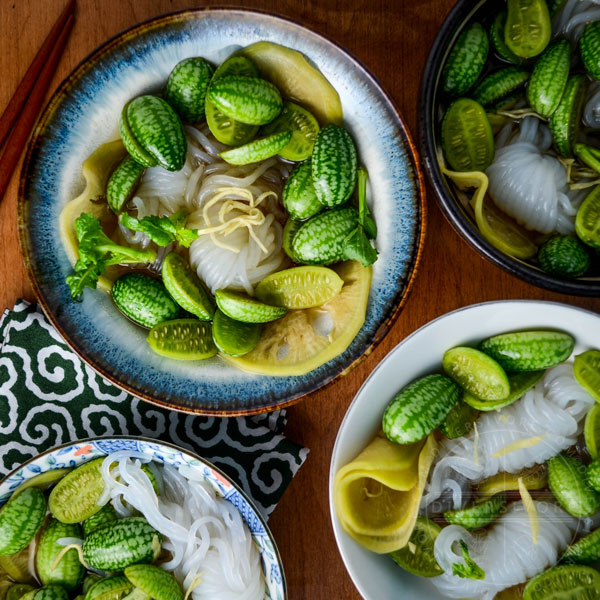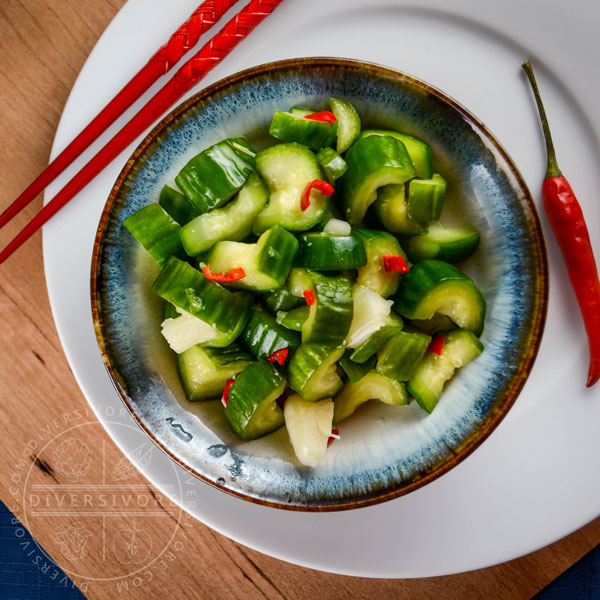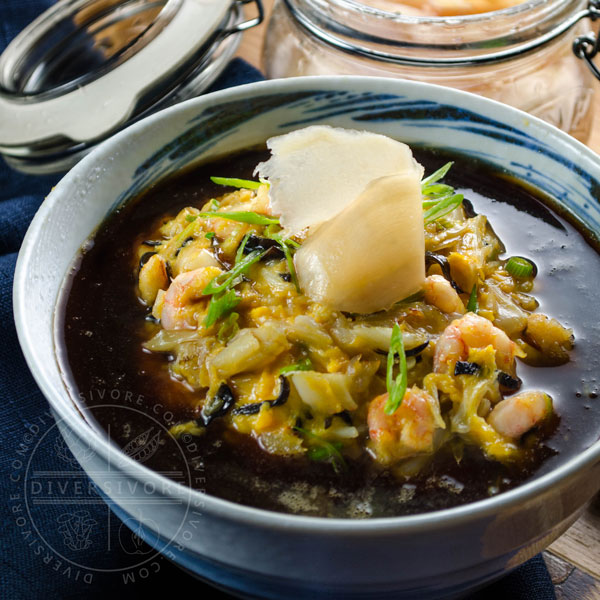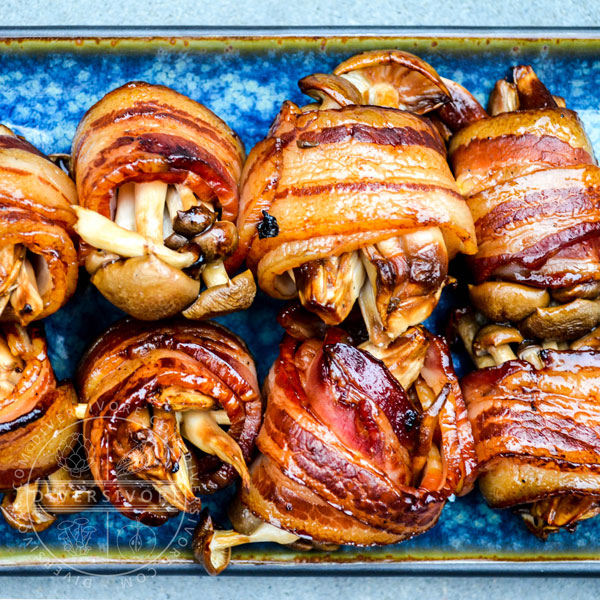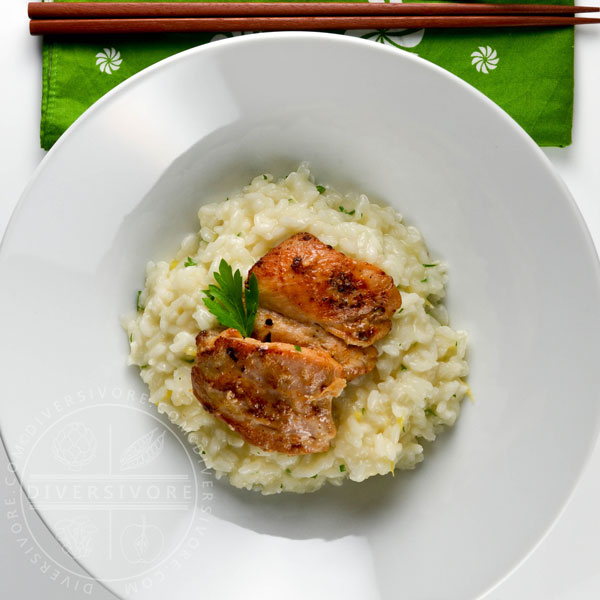Diversivore Guide To
Rice Vinegar
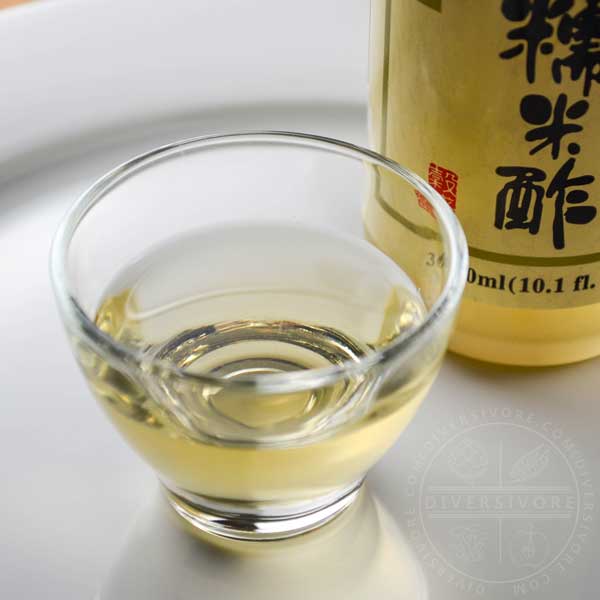
Share this Guide
The Basics
What Is It?
Vinegar made from fermented rice. In it's simplest form, it's a flavourful, clear to pale yellow liquid. There are also special varieties of rice vinegar that are made with different types of rice or different fermentation methods (e.g. Chinkiang vinegar).
Where Can I Find It?
Rice vinegar is easy to find at most pan-Asian grocery stores, and is increasingly common in Western grocery stores. Specialty brands or varieties may be ordered from online retailers.
Flavour Profile
Sharp, acidic, slightly sweet . Rice vinegar generally contains as much acetic acid as regular (white) vinegar, but the flavour is generally considered much milder and more complex.
Other Names
English: rice wine vinegar
Chinese: 米醋 - mǐcù
Japanese: 米酢 - komezu
Korean: 쌀식초 - ssalsigcho
Vietnamese: giấm gạo
Rice Vinegar FAQs
Are all types of rice vinegar the same?
No. There are special varieties of rice vinegar made with different types of rice and/or other added ingredients. Brown and white rice vinegars are two particularly common varieties. Some well-known named vinegar varieties are also types of rice vinegar (Chinkiang and red vinegar, for example).
Are different types of rice vinegar interchangeable?
Somewhat. Most of the white rice vinegars are fairly interchangeable, regardless of their country of origin. Brown rice vinegar has a somewhat different flavour and darker colour than the standard variety, but is still fairly interchangeable. Specialized varieties like Chinkiang vinegar generally have very distinctive flavours and/or colours. Substituting for these will change the flavour and character of a recipe.
How strong is rice vinegar?
Unless otherwise noted, usually between 4 nad 5% acetic acid. Some specialty rice vinegars (e.g. Chinese red vinegar) may be considerably lower in acetic acid - closer to 2.5%.
Can you preserve with rice vinegar?
It depends. Hot-water bath home canning generally requires the use of vinegar with at least 5% acetic acid. Some white rice vinegars meet this standard, but many varieties are less acidic, and in some cases significantly less. Lower acidity vinegars may not be safe to use for hot water bath canning methods, but should still work fine for making fridge pickles or other short-term preserves.
How-To
Find
Rice vinegar is generally easy to find at Asian grocery stores, and is increasingly common at Western grocery stores. Regional varieties are, unsurprisingly, most commonly found at grocery stories catering to the region in question.
Choose
Look for rice vinegar with only basic ingredients - ideally just water, rice, and bacterial culture. Some inexpensive varieties will include added sugar, salt, vinegar, MSG, and/or alcohol.
Prep
Difficulty: Easy - Rice vinegar requires no special preparation, and can generally be used right out of the bottle.
Use
As you would any other vinegar; in salads, for pickles, in sauces and marinades, etc. Rice vinegar can often be used in greater quantity that white vinegar without tasting as harsh.
Store
Short or Long Term: Store in a cool, dry pantry or similar location. Rice vinegar can be refrigerated, though there is no need to do so.
Culinary Info
Flavour Profile
Sour/acidic, mildly sweet - The most prominent flavour in rice vinegar is, unsurprisingly, the sharp and sour taste of vinegar (acetic acid). Unlike white vinegar, which is pure acetic acid diluted in water, rice vinegar also contains numerous other compounds left over from fermenting the rice. This gives it a milder, more complex, and somewhat sweeter flavour.
Substitutions
White vinegar: substitute ~1/2 the quantity, then diluted to full volume with water, and mix with a small amount of sugar.
White wine, champagne, or apple cider vinegars: substitute ~3/4 the quantity, and dilute with water if necessary. These taste very different from rice vinegar, but are similarly flavourful and mild tasting when compared to white vinegar.
See "Substitution Note" below for more detail.Cuisines
Rice vinegar is a common and important staple in many East Asian cuisines. The mild but distinctive flavour has endeared it to a number of Western chefs over the last few decades, and it's increasingly common in a wide range of contemporary dishes.
Flavour Pairings
Rice vinegar pairs very well with vegetables, seafood, rice, and noodles. It's excellent for balancing out sweet and salty sauces, and is often a critical component in many richly flavoured Asian sauces, marinades, and dips.
Varieties
The differences between basic (plain) rice vinegars produced in different countries and regions are generally subtle. In general, Chinese varieties will have the strongest flavour and highest acidity, while Japanese varieties are milder, and Korean ones milder still.
The various "specialty" rice vinegars (produced by aging, or with different fermentation methods) may vary substantially, both from basic rice vinegar, and from one another. This article deals primarily with plain rice vinegar, but see "Important Varieties" below for more information.
More Info
Nutrition
Not a substantial source of fat, calories, sodium, or nutrients.Nutrition FactsRice Vinegar - 100 ml (3.5 oz)Amount Per ServingCalories 18% Daily Value*Sodium 2mg0%Carbohydrates 1g0%Sugar 1g1%* Percent Daily Values are based on a 2000 calorie diet.GMO Status
Non-GMO, though the potential exists for this to change in the future. See "GMO Status Note" below.
Health & Science
Rice vinegar has a very limited nutritional impact. Some strong/mature varieties are touted for their anti-oxidant content and potential health benefits, though very little scientific research has been conducted to support these claims.
Organic vs. Conventional
Both organic and conventionally grown choy sum are commercially available, though organic availability is often very limited regionally. It may be found through some niche retailers, or at farmers markets.
Recipes with Rice Vinegar
Share this Guide


